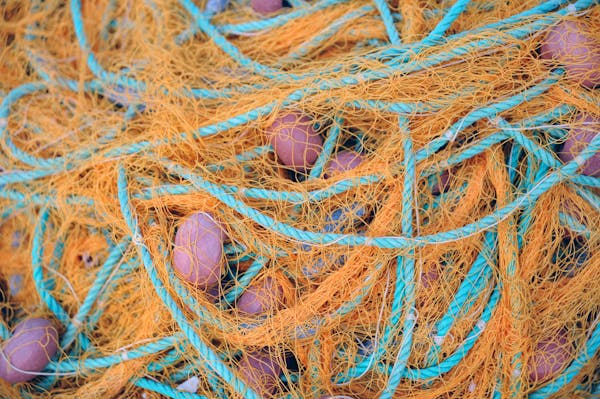In Class 8 Science Ch 3 Synthetic Fibres and Plastics, we explore the world of synthetic fibers and plastics, which have become integral to our daily lives. This chapter covers the various types of synthetic fibers, their properties, and how they are used in a wide range of applications, from clothing to industrial products. We also discuss plastics, including their different types, uses, and the significant environmental challenges posed by plastic waste. Understanding the production, advantages, and disadvantages of synthetic materials will help us appreciate their impact on both society and the environment.
Class 8 Science Ch 3 Synthetic Fibres and Plastics

CHAPTER: Synthetic Fibres and Plastics – Exercise Solutions
I. OBJECTIVE TYPE QUESTIONS
A. Choose the correct option
- Which of the following is not a synthetic fibre?
Answer: (b) Cotton - A synthetic fibre used for making fishing nets and strings of badminton and tennis racquet:
Answer: (a) Rayon - Which of the following is a characteristic of a synthetic fibre?
Answer: (c) High moisture absorbing capacity - Which of the following is a property of plastics?
Answer: (a) Poor conductor of electricity - A plastic used as automobile battery casings:
Answer: (d) PVC - Which of the following cannot be remoulded after heating?
Answer: (c) Polystyrene (Thermosetting) - Polyethylene is used for making conveyor belts?
Answer: (a) Nylon - Which of the following fabrics is waterproof?
Answer: (b) Rayon - Polythene is used for making:
Answer: (c) Spandex - Which of the following are harmful effects associated with plastic disposal?
Answer: (d) All of these
B. Match the Following
| Column A | Column B | Answer |
|---|---|---|
| 1. Rayon | a. Lightweight sails | 1 → a |
| 2. PET | b. Containers for bleaches and acids | 2 → b |
| 3. Polyester | c. Containers for microwave cooking | 3 → d |
| 4. HDPE | d. Polybags | 4 → c |
| 5. Acrylic | e. Home furnishing | 5 → f |
| 6. LDPE | f. Sweaters, carpets, and blankets | 6 → e |
Class 8 Ch Synthetic Fibers and Plastic
II. VERY SHORT ANSWER TYPE QUESTIONS
A. Give one word for the following
- Fibre also known as artificial silk:
Answer: Rayon - A synthetic fibre used for making swimwear:
Answer: Nylon - Lycra is the other name of:
Answer: Spandex - Plastic that have heavy cross-linking:
Answer: Thermosetting plastics - Substances that cannot be decomposed by microorganisms:
Answer: Non-biodegradable substances
III. SHORT ANSWER TYPE QUESTIONS
- What are synthetic fibres? Give two examples.
Answer: Synthetic fibres are man-made fibres obtained from chemicals or petroleum products.
Examples: Nylon, Polyester. - State the relevant property of the fibre used in the following:
a. Nylon threads are used for making fishing nets and climbing ropes.
Answer: Nylon is strong and elastic.
b. Spandex is used in clothes that require fitting.
Answer: Spandex is highly stretchable. - What do the following stand for: PVC, LDPE, and PS? Write two uses of each.
Answer:- PVC: Polyvinyl Chloride — pipes, electrical wire insulation.
- LDPE: Low-Density Polyethylene — carry bags, squeeze bottles.
- PS: Polystyrene — disposable cups, packaging material.
- State any four harmful effects associated with disposal of plastics.
Answer:- Non-biodegradable
- Causes soil pollution
- Releases toxic fumes when burnt
- Harms aquatic animals
- Suggest any two ways for reducing the harmful effects of plastic disposal.
Answer:- Reuse and recycle plastic items
- Avoid single-use plastics and carry cloth bags
IV. LONG ANSWER TYPE QUESTIONS
- Write any three advantages and disadvantages of synthetic fibres.
Answer:
| Advantages | Disadvantages |
| 1. Synthetic fibres are strong and durable. | 1. They melt on heating and can catch fire easily. |
| 2. They are lightweight and easy to maintain. | 2. They are less breathable and may cause skin irritation. |
| 3. They are cheaper and readily available in different varieties. | 3. They are non-biodegradable and cause environmental pollution. |
2. Differentiate between thermoplastics and thermosetting plastics. Give two examples of each.
Answer:
| Thermoplastics | Thermosetting Plastics |
| 1. They can be softened on heating and reshaped again and again. | 1. They cannot be softened once moulded; they permanently set. |
| 2. They are flexible and less brittle. | 2. They are hard, rigid, and more brittle. |
| 3. They are recyclable. | 3. They are not recyclable. |
| Examples: PVC, LDPE | Examples: Bakelite, Melamine |
3. Discuss the general properties of plastics with relevant applications.
Answer:
- Lightweight
Plastics are very light compared to metals and glass.
Application: Used for making bottles, bags, containers, and household items. - Strong and Durable
Plastics do not break easily and last for a long time.
Application: Used in furniture, toys, helmets, and automotive parts. - Non-corrosive
Plastics do not rust or corrode like metals.
Application: Used in water pipes, chemical containers, and storage tanks. - Poor Conductor of Heat and Electricity
Plastics do not allow heat or electricity to pass through.
Application: Used for electrical wire insulation, switchboards, handles of cooking utensils. - Waterproof and Resistant to Chemicals
Plastics resist water and many chemicals like acids and bases.
Application: Used in raincoats, waterproof sheets, chemical containers, laboratory equipment. - Non-biodegradable
Plastics do not decompose easily and remain in the environment for years.
Application: Important to recycle and reuse plastic items due to pollution concerns.
We’ve learned how synthetic fibres are created from chemicals and how they differ from natural fibres in terms of strength, durability, and cost. At the same time, we explored how plastics are versatile, lightweight, and used in countless applications. But it’s equally important to remember that Class 8 Science Ch 3 Synthetic Fibres and Plastics, while useful, also contribute to environmental problems like pollution and non-biodegradability. This brings a clear need for proper disposal, recycling, and responsible usage.
In conclusion, by studying Class 8 Science Ch 3 Synthetic Fibres and Plastics, we gain not just scientific knowledge, but also the awareness to make smarter choices as consumers. Whether it’s choosing eco-friendly alternatives or understanding how to recycle better, our daily actions matter. The chapter on Class 8 Science Ch 3 Synthetic Fibres and Plastics reminds us that science is not just about facts—it’s about how we use that knowledge to improve the world around us.
Class 8 Science Ch 3 Synthetic Fibres and Plastics
For the official Class 8 Mathematics Solutions, you can visit:
